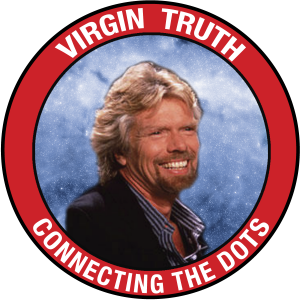
2012 Robert Steele for Richard Branson: The Virgin Truth 2.2
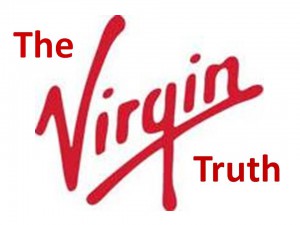

2012 Robert Steele for Richard Branson: The Virgin Truth 2.2

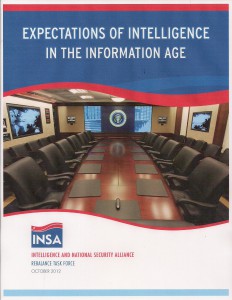
UPDATE: 1 January 2013 from Spanish Dancer:
What is most striking to me, and to a few others I have spoken to recently, is the SECDEF quote early in the paper. If we follow its premise it puts anyone who opposes our projection of power in the cross hairs. It is this doctrinal fluff that we have touted for the last decade that must be tempered, otherwise 97% of the planet is and will our enemy. We will subsequently wrangle our ourselves into skirmishes and actions for nothing more than to save face and uphold flawed doctrine. We must bring to the forefront a sense of rationality about our defense and definition of national security. We must separate these from economic superiority debates and move policy decisions to the ones that truly matter. You have appropriately pointed out these yet again as the prevention of war and humanitarian crisis.
See Also:
UPDATE 5 December 2012: Posted full-text online 2008 Open Source Intelligence (Strategic) 2.0 in support of a larger M4IS2 / OSE dialog and added to existing paragraph on Global Coverage:
For the record, Keith Hall established the budget for the OSA when he was interviewed by Boyd Sutton — $10M a year for each of 150 topics not covered by an IC obsessed on a few hard targets and oblivious to all the rest ($1.5B). Congressman Simmons (then on the Homeland Security Committee) and I added $30M for each of the 50 states to create the bottom up “cop on the beat” and citizen “intelligence minuteman” 119 (auto repeat warning to 5 klik radius) and 114 (text or photo / text with geospatial grid to local fusion center) capabilities and the broader Smart Nation platform for eventually integrating education, intelligence, and research. And then he lost by 80 votes because his staff did not distribute 240 copies of THE SMART NATION ACT: Public Intelligence in the Public Interest, and two newspapers in his district turned against him because in the absence of the books, they had no idea he was a visionary as well as a patriot.
UPDATE 4 December 2012: Short URL created:
http://tinyurl.com/INSA-OSINT
Steele finalized total post and added paragraph:
Put bluntly and directly, if a President were to direct D/OMB to create a Presidential initiative, IOC $125M, FOC $3B, or if a Secretary of Defense were to fund the Open Source Agency (OSA) out of hide, I could, within three to five years, not only provide 90% of the Whole of Government decision-support that is not provided today, but also assure both Whole of Government PPBS/E, and provide the President and Congress with a sufficiency of evidence justifying the reduction of the secret world's budget to below $20B per year, while helping DoD achieve a 450-ship Navy, a long-haul Air Force, and an air-liftable Army with half the flags and half the dollars they have today. This is not rocket science. Intelligence with integrity is the most powerful lever on the planet.
UPDATE 3 December 2012: Added links including DCI Preparing US Intelligence for the Information Age (STIC 93-001, January 1993). INSA is just now getting a partial and terribly flawed view of what the smart people were saying in 1992-1993.
UPDATE 2 December 2012: Richard Wright's comments on paper added at end of post followed by Steele endnote.
Click here to read the press release
Click here to download the one page synopsis of the white paper
Click here to download the white paper
Snap-Shot:
The INSA Rebalance Task Force concluded that although the IC developed world-class capabilities for intelligence-driven tactical operations in the last decade, the sources for developing global situational awareness and providing strategic warning are rapidly changing. The IC will need to develop authorized and appropriate techniques that improve its ability to leverage the growing platforms and vast amounts of information that are now openly available. To successfully leverage openly sourced information, the IC will need to develop capabilities to quickly validate and analyze that information, accurately integrate it with that gleaned from traditional collection sources, and present the resulting knowledge to policy makers addressing national security issues of an urgent and critical nature.
Dr. Stephen Cambone, former Undersecretary of Defense for Intelligence and INSA Rebalance Task Force Chair, said, “The challenge moving forward will be for the IC to enlarge its sphere of collection and the foundation for its analysis beyond the information gained through traditional methods. In the new era of global access to diverse and burgeoning sources of data and information, the Congress will need to authorize appropriate techniques for use by the IC to allow it to extract value and knowledge from open sources.”
The key proposals presented at the conclusion of the white paper are:
Executive Summary
The U.S. Intelligence Community (IC) is still living largely in the world of traditional secrets. In an era of global access to diverse and rich sources of data and information, the IC must embrace a new understanding of intelligence, knowledge, and rapidly evolving technology in order to sustain its relevance.
• The IC must become a curator of knowledge and information, translating secret and open information into useful knowledge for strategic warning, situational awareness and crisis management.
• In order to meet expectations from national security policy makers, the IC will need to monitor, measure, validate, analyze and distribute information collected in the open source world and across social networks.
• Traditional intelligence activities will retain their importance as the competitive advantage of the IC.
• Policy makers will want this melded knowledge in near real-time, not in days or hours.
• U.S. laws and practices must keep pace with this information revolution in a manner that respects privacy and civil liberties.
• Policy makers are likely to demand reports with knowledgeable insight into the trends that drive groups to form networks opposed to official government policy. Trends of interest include:
oo Shifting demographics
oo Competition for water, energy, food, medicine and other resources
oo Pandemics
oo Cyber threats
oo Global criminal networks
oo Continuing ethnic, sectarian and secular conflict
The white paper concludes with the following proposals:
• Policy makers of the incoming administration must engage the IC to better understand the relative roles of open source and traditional intelligence in meeting policy makers’ needs.
• The executive and legislative branches should propose and/or make policy, regulatory and statutory changes as appropriate and necessary to ensure that privacy and civil liberties are protected.
• A coalition of current and former decision makers and intelligence practitioners, as well as interested policy organizations, should be formed to recommend ways to resolve the practical issues
associated with the collection, analysis, validation, integration and dissemination of openly sourced intelligence.
THE REPORT ITSELF – REVIEW
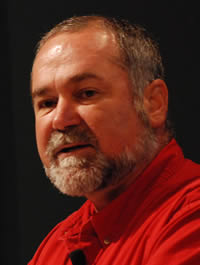
ROBERT STEELE: The report has no bibliography, no footnotes, and no index. While it bears remarkable similarity to the concepts, doctrine, capabiltiies, and practices I have been calling for since 1988, there are only two people engaged in this report process that are likely to have read some of my work: Joe Mazzafro and Carmen Medina. This may well be an immaculate conception, in which case it is an excellent case study in time lags between agile minds and bureaucratic “no mind” — 20 years. The recommendations almost precisely mirror what Joe Markowitz and Paul Wallner, Tom Pedtke, and I (and a tiny handful of others) were working on in 1992. 20 years! The report is in many ways a perfect counter-foil to my own newest work, “The Craft of Intelligence,” forthcoming in Robert Dover, Michael Goodman, and Claudia Hillebrand (eds.). Routledge Companion to Intelligence Studies (Oxford, UK: Routledge, 31 July 2013), a book I recommend in the strongest possible terms as among the first to really engage 21st Century intelligence challenges and possibilities.
Before my comments, let's start with what the report does not say. It does not say that the US is over-invested in technical collection that does not work as advertised and provides a tiny fraction of what is needed. It does not say that investments in processing have been neglected for fifty years, and that investments in inter-agency and all-source fusion processing have been cursory at best, treasonous at worst. It does not say that our clandestine service is a fraud, our analysts are mostly children, and the security mind-set of the IC is such that effective interaction with the real world, and particularly foreigners who know stuff, is next to impossible. It does not say that still today the National Counterterrorism Center (NCTC) is a very expensive trravesty, with over 80 different databases that have to be individually searched by someone experienced in the arcane search architecture and commands of that specific data base (i.e. a different person for each database), and if they lose their password, it will take days to reset it. And other stuff along those lines.
The following occur to me as I go through the actual 20 page document.
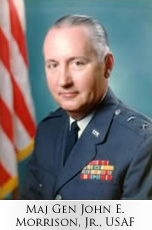 01 This report is 20 years late and out of focus — it is not really focused on all open source information that is mostly human in nature, or even the deep web, but rather on the fad of the day, social media. MajGen John Morrison, USAF (Ret) would keep inviting me to speak to this group in the 1990's, and toward the end I would demur, suggesting that they might be tired of listening to me, and he would say “Robert, you don't understand. They have not been listening in past years. This is the year I hope they will listen!” And so we would try again. I think we gave up on them around 1997.
01 This report is 20 years late and out of focus — it is not really focused on all open source information that is mostly human in nature, or even the deep web, but rather on the fad of the day, social media. MajGen John Morrison, USAF (Ret) would keep inviting me to speak to this group in the 1990's, and toward the end I would demur, suggesting that they might be tired of listening to me, and he would say “Robert, you don't understand. They have not been listening in past years. This is the year I hope they will listen!” And so we would try again. I think we gave up on them around 1997.
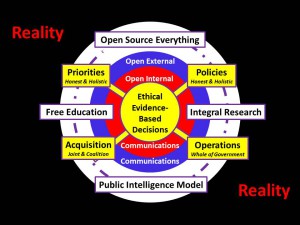
So they are 20 years late and still do not really have a grasp of what it means to have a strategy, to have a strategic analytic model, to have a requirements system, to do warning at three levels (near, mid, long), to do Whole of Government decision-support (at all levels from street and desk to Cabinet, across all mission areas), to take pride in ethical evidence-based decision-support, to actually impact constructively on national priorities, policies, acquisition, and operations — and they are completely lacking on Human Intelligence (HUMINT), multi-anything, and Open Source Everything (OSE).
02 Anyone who thinks that the current national and defense policies toward Asia are a) a strategic pivot and b) policies, does not understand strategy or policy. What we have right now is a massive case of strategic decrepitude, and an incoherent set of policies that are being mocked around the world. The President has just been politely kicked out of Asia, which is refusing the lunatic and predatory Trans-Asian Partnership (you give, we take), and instead going forward with the Regional Comprehensive Economic Partnership that excludes the USA. As with the Community of Latin American and Caribbean States (CELAC) that excludes the USA and Canada, and as with the emerging African, Central Asian and other communities of interest, it is now understood by most that the US Government (not to be confused with the Republic or the public inhabiting America the Beautiful) is toxic — all things being equal, following the USG is a certain heart-break and a probable bankruptcy.
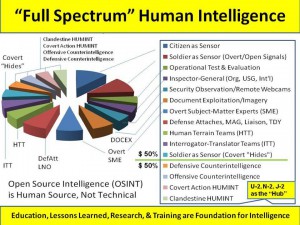
03 This 20-pager fails at three levels.
First: this is not a group that understands Human Intelligence (HUMINT) inclusive of offensive and defensive counter-intelligence (two of the fifteen slices of “full-spectrum HUMINT”).
Second: this is not a group that understands World Brain, EarthGame, Smart Nation, or the eight tribes of information-sharing and sense-making. Certainly this is not a group that has a clue on Epoch B advanced information operations leveraging M4IS2 / OSE.
Third: this is not a group that is truly tuned in to near-real time multi-lingual (183 languages) geospatially-founded machine-speed all source data fusion or processing — they really truly believe in their hearts that “OSINT” is just another technical collection discipline, and processing and sense-making are someone else's problem. In other words, this is a group that has nothing to offer the policy, acquisition, and operations communities, which is ignoring them now anyway (they don't seem to realize that last bit). The focus on “social intelligence” is the indicator of how far off track these people are. With the possible exception of Carmen Medina, I doubt any one of these people knows what “citation analytics” means, or how to leverage it. They are certainly not tuned in to collective intelligence and cognitive surplus — their idea of “social intelligence” is twisted and far removed from the bazaars of humanity outside the USA.
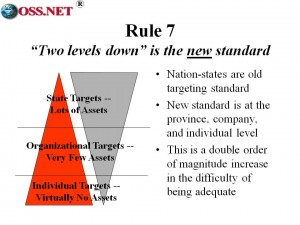
04 “Strategic Warning” and “Demand Pull” are terms of art for “we don't have a clue.” The idea that strategic warning is some kind of connect the dots challenge for high speed high cost technical architectures is a clear sign that the individuals discussing this concept are totally divorced from reality and out of touch with the true craft of intelligence. Strategic Warning — as Michael Herman among others has documented so well — is a long game play, and is almost totally reliant on not just open sources but also Global Goverage (to which I would add Cambone's signal contribution in 2000, going two levels down, to universal neighborhood granularity). “Demand Pull” is an idiot's term for give me more money and I'll figure out something. David Cameron's little dashboard on his cell phone does absolutely nothing at all to help him — it reminds me of NewsEdge, the company that struggled in the 1990's to understand that humans would not value having to read a headline every 15 seconds. I already do strategic warning (I tell the truth), and I already do Demand Pull in a way this group cannot compute, precisely as I described it in Canada in 1994, by abandoning the linear paradigm and embracing the diamond paradigm. Just as when I soundly exposed the IC's debility with a few phone calls in the 1995 Aspin-Brown challenge match on Burundi, I know who knows and I can put a policy maker or acquisition manager or operator in touch with the person who knows in their head, who can create instant tailored answers that did not exist in analog or digital form before. Even if an IC analyst knows what I know, with the present deeply ingrained mind-sets of the aging security force, the IC will remain dysfunctional no matter how smart any one analyst might be.
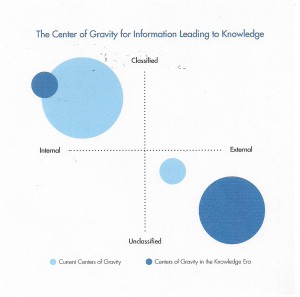
05 “The sources, methods, tools, and products available in the private sector rival and, in many instances, surpass those of the IC.” I am reminded of John Perry Barlow's visit to CIA in the aftermath of their encountering him in 1992 at my first conference, and his famous 2002 description of CIA, in Forbes, as being the last vestige of the Soviet gulag and Soviet-era office style, equipment, and culture. There you have it, but the good news is that most corporations, non-profits, academics, civil society, etcetera, they don't have a clue either. Intelligence is not a profession today, it is a scam, and both practitioners and policy makers share the blame for letting secret intelligence get away with vaporware for the past 50 years. As I lectured NSA in Las Vegas in 2002, we are long overdue for focusing on the I in IT (and yes, Peter Drucker said this first in 1998, but the IC would not listen to him either).
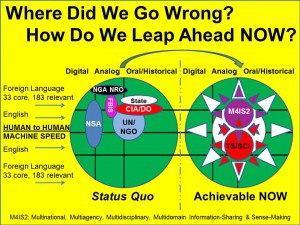
06 I enjoy their one graphic above, as it reminds me of my 1990's version — my latest from 2009 is here to the right — and makes as much sense. The problem the IC has is that it has refused to be serious about OSINT (or M4IS2) for 20 years, and at the same time been oblivious to the fact that when fiscal cliff time comes, those who do not work do not eat — the IC has not earned its way, and it is too late for most of those serving in leadership positions (really more like very senior administrative clerkships) to do anything other than plan for their retirement. They literally do not know what they need to know to be effective. It saddens me to reflect on how much I and Andy Shepard and a few otherss knew in 1992 — 20 years ago — and we did not stop learning. Today I know vastly more than any IC leader [or wanna-be] about the viable options, but absent a President or Secretary of Defense that actually wants to use intelligence to dramatically lower the cost of Whole of Governance while dramatically increasing benefits to the public, I see no way forward within the USG.
[NB: I held Full Scope for 30 years (1976-2006), and now have an OPM SSBI completed 12 March 2012. I am looking for just one IC or DoD senior with an open mind…I know precisely what is needed and how to do it and I have the only little black book of names, not just in NCA but world-wide, that is actually worth something to anyone who would like to build an IC that cannot be ignored or have its budget sacrificed to the fiscal cliff gods. Not only could I create an Open Source Agency overnight, but with USG access and validation, Sir Richard Branson and The Virgin Truth could be a public diplomacy triumph — a game changer. But I would be happy in any job, my SF-50 documents my departure as a Excepted Permanent Veteran at GS (previously GM) 14 step 5, and my SF-52 shows me recommended for rehire and promotion.]
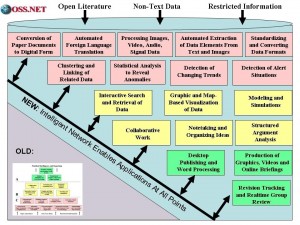
The US IC was told in 1985-1988 exactly what it needed to do in order to enter the 21st Century with some semblance of capacity, and each of the seniors then serving refused to be wise. Diane Webb and Dennis McCormick under Gordon Oehler were ignored and pushed out, or we would have CATALYST (Computer Aided Tools for the Analysis of S&T) today. Andy Shepard made it all the way to ADDNI/AP and finally retired without ever seeing his promising 1992 vision implemented. Tim Hendricks with GRANDVIEW at the National Ground Intelligence Center (NGIC) was starved out at the same time that the Army started falsifying databases to inflate the threat and justify heavier systems (never mind little things like bridge loading data). Later, a second generation innovator, Carol Dumaine sidelined at Energy and is now in a nunnery, while her brilliant idea, Global Futures Partnership was starved to death and eventually drop-kicked over to State where it appears to be buried. The list is long.
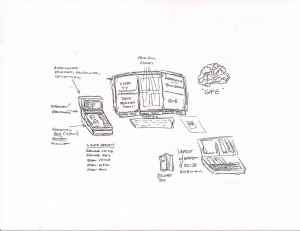
I particularly want to mention JNIDS IV. In 1989 the Marine Corps proposal, to build an all-source fusion work station, won. As I learned years later (too late to get the Commandant of the Marine Corps wound up), the Admiral nominally in charge of JNIDS overturned that win with the words “We are a Navy shop, we will do a Navy problem.” That is precisely the kind of corruption — a complete lack of professional integrity — that is pervasive in our Armed Forces, in our secret intelligence world, and across the US Government. ENOUGH!
Truth and integrity are back in style. Get with the program!
07 As I finish the conclusion, I am confirmed in my view that this paper is written for the purpose of justifying a whole new suite of technical collection investments — and some processing investments, but heaven forbid they actually coordinate with OMB about common solutions for producers and consumers of intelligence — or that they contemplate for one instant the M4IS2 / OSE concepts that can be implemented in tandem or in isolation. Their final headline:
The IC will become ineffective if it fails to assimilate these new and dynamic information technologies, capabilities, processes, and means of conveying
knowledge to policy makers.
Duh. This is not a serious effort, and if this is the best that INSA and the contributors — less Cambone, Medina, and Mazzafro can do — then they need to stay retired, they are still part of the problem.
As I go over the paper a second time, four big things keep coming back to me, all of them well-known to those of us that have labored for twenty years to get people to listen to common sense in the public interest:
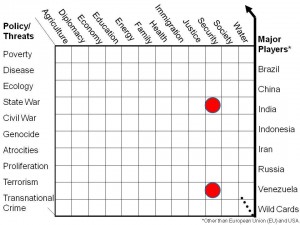
01 Strategic Analytic Model. These people have no idea that the ten high-level threats to humanity have already been identified and prioritized, and that the US Government is in willful ignorance of seven of the ten. At the same time there is no sense of how to address the cross-cutting policies, the true costs of goods and services, the whole system model, and so on. Or even – shudder — true cost economics across all Whole of Government mission areas.
02 Global Coverage. Boyd Sutton knows more about Global Coverage than this entire group. It may be time to bring him back. For the record, Keith Hall established the budget for the OSA when he was interviewed by Boyd Sutton — $10M a year for each of 150 topics not covered by an IC obsessed on a few hard targets and oblivious to all the rest ($1.5B). Congressman Simmons (then on the Homeland Security Committee) and I added $30M for each of the 50 states to create the bottom up “cop on the beat” and citizen “intelligence minuteman” 119 (auto repeat warning to 5 klik radius) and 114 (text or photo / text with geospatial grid to local fusion center) capabilities and the broader Smart Nation platform for eventually integrating education, intelligence, and research. And then he lost by 80 votes because his staff did not distribute 240 copies of THE SMART NATION ACT: Public Intelligence in the Public Interest, and two newspapers in his district turned against him because in the absence of the books, they had no idea he was a visionary as well as a patriot.
03 M4IS2. Joe and Carmen certainly understand my focus on the eight tribes of information-sharing and sense-making, within which government is the least important, generally the beneficiary rather than the benefactor. For this report to not have an semblance of understanding of what it takes to create a Smart Nation, is an indictment of INSA and its corporate membership.
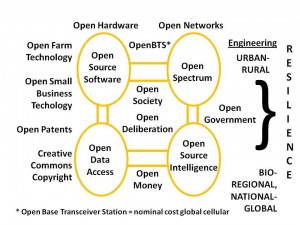
04 OSE. Most in the IC are as ignorant of OSE as they still are of semantic processing, open hypertextdocument system and other innovations that are inevitable as the world by-passes the US Government — as John Perry Barlow said so famously, the Internet interprets censorship as an outage, and routes around it. Well, in a world of distributed intelligence, the Internet interprets stupidity as an outage, and routes around it.
I will be blunt, as is my wont when not serving another master [if someone were to hire me — I am not interested in corporate, only government — I would close down my public persona]: this report lacks intelligence and it lacks integrity. It is a vanilla justification for technical systems we do not need and cannot afford. It is devoid of understanding with respect to HUMINT, strategic analytic modeling, global coverage, all-source processing, M4IS2, and OSE. It certainly does not anything to enhance decision support to tactical combatants or policy makers and acquisition managers. I am glad I read it. These many years in the wilderness (20, actually), I have on occasion doubted my value. This report is as much validation as I am likely to get in the near term. For that I am thankful. St.
See Also:
Articles & Chapters Directory (List)
Briefings & Lectures Directory (List)
Books on Intelligence & Information Operations by Robert David STEELE Vivas et al
Photographs: Robert David STEELE Vivas at 60
Who’s Who in Collective Intelligence: Robert David STEELE Vivas
Worth a Look: Book Review Lists (Negative)
Worth a Look: Book Review Lists (Positive)
Worth a Look: Book Reviews on Intelligence (Most)
UPDATE of 2 December 2012

RICHARD WRIGHT:
Robert,
I read the entire INSA paper with considerable interest. It attempts to balance between the obvious need to take open source intelligence seriously in light of the so-called “Global Network*” and the need to protect the traditional institutional producers of secret intelligence. What is really needed is a recognition that the time has come for the U.S Government (I use the term advisedly) to recognize that your ideas on OSINT are absolutely relevant for the 21st Century.
As for your critique of this paper, you are absolutely dead on. With folks like General Hayden (USAF ret.) signing off on it you can bet it was designed precisely not to make waves. I am sure Charlie Allen was sent off to some make work research project to keep him out of everyone’s hair. The basic problem is that INSA is unwilling to commit to the concept of an independent OSINT Agency because it would make it clear that CIA has not done the job it was created for by the 1947 National Security Act: namely to collate and organize all source information to provide strategic and tactical warning intelligence of another Pearl Harbor and strategic intelligence to decision makers. This last capability disappeared with the dissolution of the CIA’s Office of National Estimates (ONE) by President Nixon. INSA is trying to give the illusion of bold proposals while still protecting the status quo. Still at least your ideas OSINT are gaining wider recognition, even if you as the real expert in OSINT are ignored.
* The Global Network is a rubric for an aggregate of independently owned and operated, but inter-connected and inter-operative telecommunication (carrier) networks. These networks incorporate both domestic and international carriers each of which consists of transmission lines (largely fiber optic or copper cable and satellite spot beams) coupled with relays, switching centers, earth stations, and various other sub-components. The content carried on these networks is obtained from public and private content providers. The public content providers include Internet Service Providers (ISPs) and Public Service Telephone Networks (PSTN). The private content providers include such entities as SWIFT and SITA. Inter-operability between the carrier networks and between the carriers and content providers is made possible by common sets of standards and procedures as established by international agreements through such agencies as the CCITT and ITU.
The INSA Paper is I hope only the first step towards real intelligence reform.
Richard

ROBERT STEELE: Richard's deep knowledge, with decades at both NSA and DIA, is a most helpful balance to my own. We are in agreement on the INSA paper, but I would stress that I am less satisfied with the INSA paper's cursory acknowledgement of “full spectrum” OSINT (they do not have a clue), that is focused exclusively on keeping the money moving toward corporate vapor-ware ostensibly capable of processing the entire Internet and particularly social media sites used by the one billion rich. The US secret intelligence mandarins (really more like super-empowered clerks) are not really devoted to the public interest, have not figured out that M4IS2 / OSE and the five billion poor are the center of gravity for future stabilization & reconstruction, and therefore they all continue doing the wrong things righter, certain that they will retire before anyone catches on to their ignorance, and equally certain that there are no retirement jobs for them in the world of OSINT, only in the world of make-believe, the world of corporate vapor-ware where no one is held accountable for failure. I am an intelligence professional and I take the craft of intelligence seriously. We have too many bureaucrats and clerk-leaders at the top of the intelligence hierarchy, and too many middle managers whose last original thought was twenty years ago (unlike the private sector, middle management is alive and well within the US Government, and particularly in the secret world where no manager is held accountable for outputs, decision-support, only for inputs — dollars spent, no questions asked).
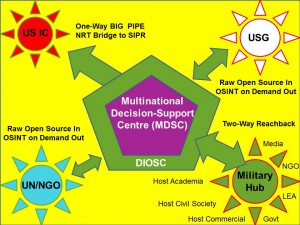
I have already reached the conclusion that in addition to the Open Source Agency [that would include General Tony Zinni, USMC (Ret) National Planning and Monitoring Center (NMPC) as a Whole of Government capability that works closely with the Office of Management and Budget (OMB) and all elements of the government, to do ethical evidence-based Planning, Programming, Budgeting, and Execution (PPBS/E); and my own long-recommended Multinational Decision-Support Centre (MDSC) [the hub for military-operated national centers in every country that signs the new Global Information-Sharing and Sense-Making Treaty, with the military organizing their countries other seven tribes for give and take] we also need to create a new national full-spectrum HUMINT capability that is virtually distributed, does not use official cover in any way whatsoever, is often multinationally-organized, region by region, and practices risk-based need to know security, avoiding the severe deficiencies of the current “system high US citizens only” HUMINT networks. Neither CIA nor DIA — and even less so SOCOM — are capable of executing that vision absent draconian mandated turn-over. The OSA, with an SCI/SAP appendage,is in my view the logical starting point, since 90% of the HUMINT is open, not secret.
Put bluntly and directly, if a President were to direct D/OMB to create a Presidential initiative, IOC $125M, FOC $3B, or if a Secretary of Defense were to fund the Open Source Agency (OSA) out of hide, I could, within three to five years, not only provide 90% of the Whole of Government decision-support that is not provided today, but also assure both Whole of Government PPBS/E, and provide the President and Congress with a sufficiency of evidence justifying the reduction of the secret world's budget to below $20B per year, while helping DoD achieve a 450-ship Navy, a long-haul Air Force, and an air-liftable Army with half the flags and half the dollars they have today. This is not rocket science. Intelligence with integrity is the most powerful lever on the planet.
There is also a very important role for the United Nations and perhaps NATO/PfP, but as things now stand I do not see the Cabinet level intelligence with integrity needed to allow me — or someone I advise — to put all these pieces together in a USG context favorable to the USA.
As I have noted elsewhere, I am far beyond OSINT. HUMINT is the center of gravity, OSINT is part of HUMINT, and M4IS2/OSE are the foundation for both multinational HUMINT/OSINT — 80% — and unilateral HUMINT/OSINT — 20%. HUMINT and OSINT — designed and executed with integrity — are the foundation for 21st Century intelligence. St.
See Also:
2012 Robert Steele: Practical Reflections on UN Intelligence [Document] + UN RECAP 3.3
2010: Human Intelligence (HUMINT) Trilogy Updated
2009 DoD OSINT Leadership and Staff Briefings
Tony Zinni, The Battle for Peace: A Frontline Vision of America’s Power and Purpose (Palgrave Macmillan, 2007)
DCI Preparing US Intelligence for the Information Age (STIC 93-001, January 1993)
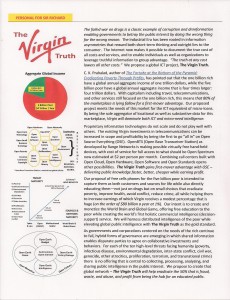
DOCUMENT (1 Page): Virgin Truth 2.6R
Updated 21 Dec 2012 1800
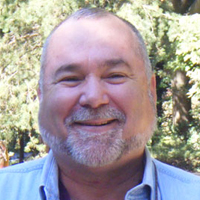
Short Persistent URL for This Post: http://tinyurl.com/UN-21-Intel
DOCUMENT: 2012 Reflections on UN Intelligence 2.3 21 Dec 2012
I had occasion to look at the Report of the Secretary General on the Work of the Organization, and thought this would be a good time to integrate some of what I have learned from working directly with the United Nations (UN), and what I believe could be helpful to the UN as it contemplates “next steps” into the 21st Century. My thoughts are deeply rooted in my perception of how badly governments have failed at governance, and how dysfunctional the Industrial Era approach to bureaucracy and information channeling has become. As the world prepares to migrate to hybrid forms of public governance, the UN's Industrial Era forms of organization and delivery are an impediment to its future viability. That is a challenge I would like to address, treating the UN as the logical hub for my emergent theory and practice of Public Governance (a mosaic) replacing Public Administration (a stovepipe) in the 21st Century.
Below the line is the document I have drafted in full text, followed by a number of links that are not in the document.
Continue reading “Practical Reflections on United Nations Intelligence + UN RECAP”

How to Perfect Real-Time Crowdsourcing
The new techniques behind instant crowdsourcing makes human intelligence available on demand for the first time.
One of the great goals of computer science is to embed human-like intelligence in common applications like image processing, robotic control and so on. Until recently the focus has been to develop an artificial intelligence that can do these jobs.
But there's another option: using real humans via some kind of crowdsourcing process. One well known example involves the CAPTCHA test which can identify humans from machines by asking them to identify words so badly distorted that automated systems cannot read them.
However, spammers are known to farm out these tasks to humans via crowdsourcing systems that pay in the region of 0.5 cents per 1000 words solved.
Might not a similar process work for legitimate tasks such as building human intelligence into real world applications?
The problem, of course, is latency. Nobody wants to sit around for 20 minutes while a worker with the skills to steer your robotic waiter is crowdsourced from the other side of the world.
So how quickly can a crowd be put into action.?That's the question tackled today by Michael Bernstein at the Massachusetts Institute of Technology in Cambridge and a few pals.
Continue reading “Yoda: Real-Time Crowd-Sourcing + Twitter Meta-RECAP”
 The Evolving Craft of Intelligence [Version 3.1]
The Evolving Craft of Intelligence [Version 3.1]
Robert David Steele
There is little desire in the developed intelligence nations to see the craft of intelligence evolve in line with the revolutions in information technology and globalization. Indeed, it can safely be said that most leaders with access to intelligence services do not value them—they are much more influenced by networks of influence and ideology that demand the status quo. Where intelligence is used at all it is generally to confirm pre-existing policy positions rather than what governing elites need to know. (Davis 1986, Garland 2012, Pillar 2011, Treverton 1986).
Ada Bozeman has written:
(There is a need) to recognize that just as the essence of knowledge is not as split up into academic disciplines as it is in our academic universe, so can intelligence not be set apart from statecraft and society, or subdivided into elements…such as analysis and estimates, counterintelligence, clandestine collection, covert action, and so forth. Rather … intelligence is a scheme of things entire. (Bozeman 1998: 177):[1]
What can be observed within both the closed intelligence communities and open academic, civil society, commerce, government at all levels, law enforcement, media, military, and non-governmental/non-profit (hereafter the “eight communities”) is a failure to comprehend the shift in the nature and reliability of their unwittingly shared sources and methods; the Earth (reality), and the mix of humanity, culture and technology.
Intelligence—the art of forecasting, warning, and holistic evaluation of cause and effect—has generally focused in the past on the identification and evaluation of grave threats and in supporting the judgment of executive agencies and political leaders with respect to those threats (Iraq and Afghanistan are two such recent incidents, and Iran is likely to become the next incident of its type).
Since 1988 I have sought to generate a paradigmatic shift in the understanding of intelligence so as to refocus it on holistic analytics and opportunities as well as the expansion of the craft of intelligence to embrace all human minds, all information in all languages, all the time. This approach – which treats the social world as an ecology – is the only one capable to dealing with the complexity present in a fluid international system typified by revolutions in the production and dissemination of knowledge, and in the character and dynamics of social relations as well as all attendant technologies.
The secret intelligence community (and the accompanying political apparatus) as one of the eight information-processing communities is – as a result of the failure to understand and adapt to these changes – so isolated that on its own terms it has become an irrelevance. More worryingly, it has become an expensive and unethical irrelevance that is undermining the craft of intelligence as a whole. I wish to restore the relevance of what I term the secret world—in the USA it now provides less than 4% of what national-level leaders need—but only in the context of a renaissance of intelligence that creates a Smart Nation and a World Brain focused on creating a prosperous world at peace by eradicating corruption, fraud, waste, and abuse. [2]
Intelligence should be an inherent responsibility of and benefit for all citizens, not just of leaders—80% of whom do not get intelligence support now.[3] We must migrate from secrets for the few to public intelligence for all.
Intelligence is Decision Support
What I present here represents the shift in my own scholarly focus from one that centred on a traditional perspective of nationally bounded intelligence activity to one in which the world’s population is taken as one informational ecology. Thus the craft of intelligence presented here is not for the benefit of one set of government actors, but is one that seeks to bring coherence within, between, and among the “eight communities” across all boundaries.
While it might be desirable to include several pages of definition here, I will simply point out a distinction between data (any raw single piece of information), information (integrated data with a narrative, generic in nature), and intelligence (both a process,[4] and a tailored answer to a given question – decision support). Intelligence is defined by the outputs, not the inputs.
In other words, data needs to be separated from noise and collated to create information, from which intelligence directly responsive to a need can be created. Information is the input, intelligence is the output.
The process of intelligence is a good one that should be understood, valued, and practiced by every citizen and demanded of every “leader.” Secret collection that is not processed is a symptom of failure, as is the neglect of open sources in 183 languages we do not speak (Olcott 2012). The cost to us—in tolerating local to global decision-making and investment that is at best incompetent and at worst a betrayal of the public trust—is now potentially catastrophic (Perrow 2009). What we do to ourselves every day out of ignorance is vastly more threatening than any possible combination of external predators.
Past critiques of the secret world that remain valid today are represented in one paragraph from a senior serving officer that bears on this chapter.[5]
The intelligence institutions have neglected support of judgment. This is partly due to being disinvited to help shape the sovereign’s judgment, but also partly due to mistaking who the sovereign has become. The people’s judgment is now being poisoned by ideologues who have filled the void. The situation is not honestly and soberly appreciated. Societal sense-making suffers due to the failure of the intelligence function and the craft to support it.
Three Eras of Intelligence
The craft of intelligence has gone through two eras and is now entering a third new era. The first era, running from the first days of recorded history and still to date, is the era of secret war, surreptitious entry and theft, and bribery to achieve ends inconsistent with those of the host country or target organization. In this tradition, intelligence is generally the province of governments, mixing dark side diplomacy and military spies, augmented by a separate track of agricultural and industrial espionage and bribery among multinational banks and corporations for whom practices that verge on the sharp and questionably ethical are a means toward illicit profit.[6] This remains—and wrongly so—the public perception of what “intelligence” is and should be.
The second era of intelligence, at least among the prominent Western nations and the USA in particular, was defined by Sherman Kent with his emphasis on strategic analytics (Kent 1965) but was immediately diminished by the unchecked expansion of clandestine and covert action operations, something never intended by President Harry Truman when he first authorized the Central Intelligence Agency (CIA) (Truman 1963).
The second era of intelligence also saw the emergence of very large commercial educational research programs as well as government and commercial research programs; and also Business Intelligence (data mining dashboards), Competitive Intelligence (narrow), and Commercial Intelligence (e.g. 360°). All of these failed to share data or evolve together. A modest literature on how the academy has failed to maintain its position as providing critical thinking skills to generations of students and in diminishing its place in providing original thought to the narrow and short-term ends of commercial and government contracts exists, as does a varied literature on bespoke research for the marketplace.
The second era also ushered in the use of technology, with collection displacing analysis while also failing to provide for processing of all that is collected. Coupled with the lack of outreach and the narrowness of external research efforts, the second era has failed to understand the world, including cause and effect. Ignorance has been the result.
The Third Era – Collective Intelligence
The third era is the era of the Smart Nation leading toward the World Brain and Global Game (the first is the content, the second the method), focusing on uniting the “eight communities” of intelligence, creating a Multinational, Multiagency, Multidisciplinary, Multidomain Information-Sharing and Sense-Making (M4IS2) network with call center nodes in each region, and ideally underpinning that with either an Open Source Agency under diplomatic auspices in the USA, or a privately-funded venture that upholds stated principles of integrity such as my mooted “Virgin Truth.”[7]
Collective Intelligence is in its infancy. The craft of intelligence must – will – eventually turn every citizen into a collector, producer, and consumer of intelligence (decision-support) in a pervasive manner not yet accepted by governments or corporations. Intelligence—decision-support—is an inherent responsibility of every citizen who wishes to foster democratic government, just society, and moral commerce.
The changing dynamics between the first two eras and the third are illustrated in Figure 1.
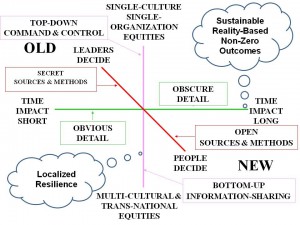
Figure 1: Context for Old versus Indigenous/New Intelligence
Corruption, market distortions and crime – especially financial crime – are “sand in the gears” of any economy or society. Intelligence — when properly led —is the lubricant of progress and of empowering the majority in society to drive individual and then economic growth. A reworked understanding of intelligence can use ‘truth’ as a lever and ‘trust’ as a source of intangible wealth.This is the diametric opposite of the prevailing culture of intelligence which supports the individual interests of nation states and businesses. But to bolster this aspirational larger end –of global open source intelligence – the secret intelligence capacity of all nations should be deployed as counterintelligence to protect the whole from internal corruption. With the one exception of counterintelligence, the third era is the era of “Open Everything,” emphasizing transparency and truth so as to provide decision-support to everyone from the citizen to the executive, building trust along the way. Vital to all of this is holistic analytics.
Figure 2 provides a visualization of where we have been and where we might go if we wish to respect reality – the top ten high-level threats to humanity – while also rapidly evolving our sources and methods to the fullest possible extent so as to serve all of humanity.
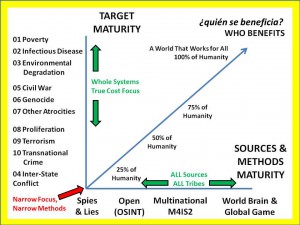
Figure 2: The Craft of Intelligence from Infancy to Maturity.
The ten high-level threats to humanity as depicted in Figure 2 are as identified and prioritized by LtGen Dr. Brent Scowcroft, USAF (Ret.), and other members of the United Nations High Level Panel on Threats, Challenge, and Change (United Nations 2004).
Poverty appears to do more damage to local, national, and global security in terms of survival and sustainability than all of the corporations put together—or the proliferating nations. The conventionally ignored five billion poor are also an infinite resource for changing how we do things, for creating infinite wealth with their most precious resource: their brains, knowledge and skill-sets (Prahalad, 2009).
Infectious Disease and Environmental Degradation (including Climate Change), threats two and three respectively, are absolutes. Today’s elite appear to have forgotten the lesson learned by the elite in New York City in the 1920’s, when public health for the poor was established precisely because infectious disease takes the rich as easily as it does the poor.
There are (at least) twelve core policy areas where the information must be shared and made sense of across all boundaries. They are listed below.
| 01 Agriculture02 Diplomacy03 Economy | 04 Education05 Energy06 Family | 07 Health08 Immigration09 Justice | 10 Security11 Society12 Water |
Figure 3: Twelve Policy Areas Demanding Transparent Sharing.
Combining these with the ten high-level threats results in a Strategic Analytic Model (EIN 2006) that frames the ten high-level threats across the vertical axis, and the twelve core policies across the horizontal axis, deepening the model by focusing particularly on the eight demographic challengers that are defining the future of Earth: Brazil, China, India, Indonesia, Iran, Russia, Venezuela, and Wild Cards such as the Congo, Nigeria, and Turkey.

Figure 4: Strategic Analytic Model.
The two dots above, red when depicted in color, show where the secret world continues to focus: inter-state conflict and terrorism. All others (across the “eight communities”) tend to focus on one issue area in isolation or provide piecemeal linkages between issues. Except for myself, no one I know of is devising a comprehensive architecture for doing holistic reflexive analytics or focusing on doing the right thing instead of the wrong thing righter. (Ackoff 2004, Fuller 1969, Myers 2010).
This is a sense-making model for local to global multinational information-sharing and sense-making. This is a model that seeks to unify the “eight communities” and what should be, but is not, a robust national, regional, and global information commons. Only a global network—a near-real-time global network, will do. As David Weinberger puts it, in a room full of experts, the only true expert is the room itself. (Weinberger, 2012). It is the network—the World Brain and Global Game connecting all minds to all relevant information—the “whole”—that is smart, not the nodes.
In reflecting on “whither [conventional] intelligence,” it is helpful to contemplate the purpose of government and the role that intelligence could or should play in achieving that role. The Preamble of the US Constitution is a generic model.
We the People of the United States, in Order to form a more perfect Union, establish Justice, insure domestic Tranquility, provide for the common defence, promote the general Welfare, and secure the Blessings of Liberty to ourselves and our Posterity, do ordain and establish this Constitution for the United States of America.
Two of these four goals (establish justice, secure the blessing of liberty) should be considered to be counter-intelligence challenges. CORRUPTION in all its forms is a major target for the new global form of intelligence outlined here. The other two (domestic tranquility, promote the general welfare) are intelligence/decision-support challenges that are best served by open sources and methods. In all four areas, domestic enemies are central actors (Taibbi 2012, North 2012).
Most governments, less Iceland specifically and the Nordics generally, are not actually working in the best interests of the 99 per cent – their larger publics. Western governments have been captured by banks and corporations (Taibbi 2010).
Information Costs Money, Intelligence Makes Money
I first recognized the market distortions inherent in the information industry in the 1990’s, when I understood that the emphasis was misplaced – on selling and buying massive amounts of information without being able to make sense of it, never offering a precise answer for a precise price.
At the same time, I began to recognize the fragmentation of knowledge and the fragmentation of the marketplace of knowledge. Below is my first attempt to get a grip on the generic structure of knowledge that must be integrated.
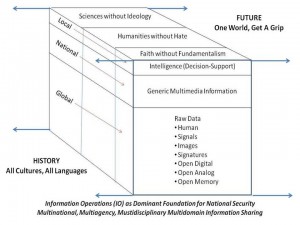
Figure 5: Information Cube.
On the next page is another depiction of the information topography; various communities continue to resist maturation toward holistic information ingestion and exploitation culminating in organizational intelligence.
Most of the world, including most of the major governments and corporations, are in Quadrant I, leveraging current internal knowledge (but forgetting much of what they know from year to year). A major impediment to maturing on the information side is the continued retardation of the inherently closed, selfish, and often dangerously insecure and misleading information technology (IT) marketplace still rooted in fragmentary proprietary “solutions.”
Emerging information networks including many civil advocacy groups are in Quadrant II, utilizing the Internet as a host and social productivity as a mind-set for sharing information, but with a very troubling lack of structure, historical and cross-disciplinary coherence, or the ability to produce actionable intelligence that can mobilize voices outside of one isolated issue at a time. None seem to understand that it is not social media that matters, but rather the social operating system that uses social media (Rheingold 2012).
Few are able to master Quadrant III, not for lack of access or money, but for lack of mind-set and appreciation for the new craft of intelligence. Most of the deep knowledge needed has not been published. Indeed, the acme of skill for the modern analyst is to know who knows, to bring the consumer and the individual external producer together so as to shepherd the creation of new tailored intelligence precisely suited to the need in real-time. This is not something that can be done by young people oppressed by 1950’s security mind-sets, deprived of access to 21st Century technology, and limited in their ability to find, much less exploit, humans who do not have the citizenship, clearances, or other burdensome access “qualifications” imposed on analysts by security mandarins.
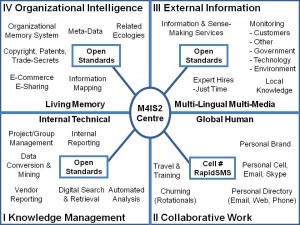
Figure 6: Four Quadrants of Information to Intelligence.
Then we have Quadrant IV, visualized and documented in the 1960’s (Wilensky 1967), and never heard from again. Today’s governments and corporations continue to suffer from lost knowledge due to high turnover and inadequate tools and practices for retaining all knowledge once acquired.
Time & Transparency
When taking the long view, it is most difficult to justify secrecy. (Herman 1996). At the same time transparency has a value so great that any effort to impose secrecy beyond a short tactical timeframe is deleterious to the broader interests of the society affected (Brin 1999).
Despite the fact that open intelligence appears more urgently needed for all elements of government and society, than secret intelligence against a non-existent conventional power threats or dubious terrorism threats, all “eight communities” persist in embracing secrecy (or proprietary) and hoarding over transparency and sharing, serving the few over the many. The inherent good in open society has been subverted by closed corruption.
The (new) craft of intelligence, in my view, must seamlessly integrate education, intelligence, and research, on a foundation of “open everything.”
Geospatial Dimension
In 1988 I pointed out to the General Defense Intelligence Program (GDIP) annual meeting that geospatial attributes were essential if we were to get to machine-speed all-source fusion. Still today the secret world refuses to be serious about this fundamental pre-requisite and foundation for being able to do machine-speed all-source fusion.
There is however very good news, and here I single out Dr. Patrick Meier, whose blog iRevolution provides regular updates about the intersection of geospatial information, open source software, and crowd-sourcing: where diasporas not only plot events and observations on a digital map, but also translate Short Message Service (SMS) texts from 183 languages into English.
Human Dimension
Human intelligence is central to the craft of intelligence—technology is not a substitute for thinking—to which I would add James Bamford’s point that no one has yet built a computer equal to the human brain (Bamford 2001). My monograph on Human Intelligence: All Humans, All Minds, All the Time is easily found online, as is the graphic with Jim Bamford’s full quote.[8]
Information Pathologies
Across current knowledge production industries there are a disturbing number of persistent information pathologies that enable those who wish to prey on the uninformed to do so at will. Such pathologies include: a culture of cheating, propaganda and PR, forbidden knowledge, missing history, manufactured consent, false science, secrecy, false instruction, and outright lies. The secret world distinguishes between “denied areas” and “hard targets” at the same time that it rejects doing what it calls “global coverage.” (Sutton 2006). What no one in the secret world appears willing to acknowledge is that without global coverage, and without a full and complete understanding of what is available from legal and ethical open sources of information (including direct local knowledge not published), it is, as one author has put it, “spying blind” (Zegart 2009). Everyone else neglects history, to their detriment (Gaddis 2004), as well as foreign language and foreign cultural studies including foreign literature (Hill 2011, Olcott 2012).
The craft of intelligence as practiced today also refuses to acknowledge the importance of steady-state and “true cost” economics (Daly 1991, 1993, 1994, 2010), called by some the triple-bottom line (ecological and social as well as financial costs). As the world begins to recognize that beyond peak oil we face peak water; that chlorine and other toxins are externalized costs that cause current illness while imposing future social and ecological costs on future generations, one has to ask:
What is the point of a “secret” intelligence community that produces so very little for the top leaders and nothing for everyone else?
A single cotton undershirt “costs” 570 gallons of water, 45 per cent of that in irrigation; 11-29 gallons of fuel; child labor at 50 cents a day across any of 17 countries; and it emits a number of volatile compounds including Nox, SO2, CO, CO2, and N2O (Liszkiewicz 2010). Within a single country, the USA, there is no “national” grasp of our vulnerability to breaking levees across nearly every county in the land, many built to the lowest engineering and financial standards possible (Boyd 2009); there is no “national” grasp of the nation-wide vulnerability to industrial-based biological, chemical, and radiological catastrophes all too possible (Perrow 2011, Denninger 2011).
Meanwhile, false US Government statistics misrepresent the unemployment rate (it is 22.4 per cent, not 8 or 9 per cent) and falsely claim new jobs rather than job losses (Roberts 2012). Other countries appear to have similar issues.
How is one to cope with a government that does not tell the truth, corporations that do not tell the truth, media that do not tell the truth, even schools that do not teach the truth nor how to grasp the truth?
This is the challenge of our times, and this is the challenge toward which I seek to direct the craft of intelligence in the 21st Century.
What Is To Be Done?
With the exception of robust counterintelligence against domestic threats, I champion “Open Source Everything.” The figure below illustrates both our challenge and our objective.
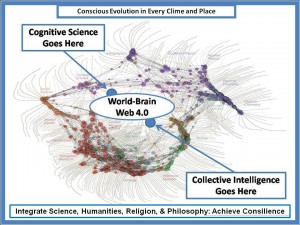
Figure 7: Toward the Unity of Knowledge.
Figure 7 depicts the fragmentation of academic disciplines and sub-disciplines. [9] Similar divisions also characterize the other seven communities of information and intelligence. The developed world has achieved a modern variant of the proverbial Tower of Babel, creating a system that seems incapable of holistic coherent sustainable analytics!
If we cannot create a craft of public intelligence that achieves both inter-community and multi-national information-sharing and sense-making, then the ethical and environmental challenges we face as a species may well overwhelm us.. There must be a “priority of effort” toward first creating an ’autonomous Internet’ (one that cannot be shut down by any government or corporation) that delivers the “six bubbles” shown below to the affluent one billion; and then is rapidly expanded toward embracing and empowering the five billion poor with free cell phones and cell phone service for at least three years, along with access to multi-lingual call centers that educate each poor person—many illiterate but not stupid – “one cell call at a time.”[10]
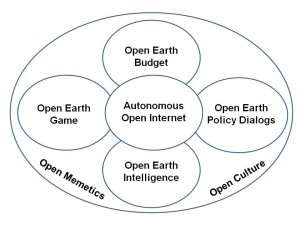
Figure 8: Autonomous Internet for a World Brain and Global Game.
Below is my comprehensive architecture for connecting all humans to all information in a manner that produces pervasive intelligence for all.
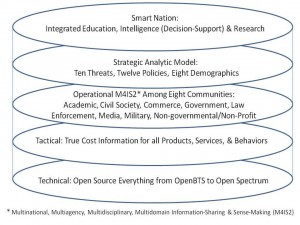
Figure 9: Comprehensive Architecture for Global Intelligence
It is not possible here to address the emerging disciplines of cognitive science and collective intelligence; both are severely constrained by the generally isolated and insular nature of each of the “eight communities”, but some intellectual progress is being made (Atlee 2002, 2009, 2012; Tovey 2008).
The two preceding objectives cannot be accomplished without a radical change in how we conceptualize and implement security within networks.[11] To be scalable at an affordable price, and to avoid the pathologies associated with proprietary software and hardware, the craft of intelligence must demand and embrace an “open source everything” approach as illustrated below. Robert Garigue’s lasting contribution to this field is this: security is about creating and maintaining trust among individuals. [12]

Figure 10: Open Source Everything and the Autonomous Internet.
We all need to discuss the open source everything approach and the transparency, truth, and trust that it seeks to foster world-wide, at every level from neighborhood to regional water authorities and more, elsewhere — this is particularly so with respect to shared information and the shared burden of sense-making from local to global (Olcott 2012). No other approach is affordable and therefore scalable. No other approach yields a good outcome.
There is so much more to be integrated into the craft of intelligence as we go forward together, but it is important to bring this chapter to a close and do so with one word and one final graphic.
The word is INTEGRITY. We have lost our integrity across all “eight communities”, and become cheating cultures with little accountability within governments, banks, corporations, even universities, trade unions, and religions. If we can share one word as an operational principle going forward, that word is INTEGRITY.
A reworked understanding of intelligence that is based on open everything, an open source principle that is premised on transparency, integrity and a global commons. There are clearly considerable barriers to entry for this revised system of intelligence: vested commercial and intelligence interests have profited from the closed and fragmented system that is currently in place. It would also seem unlikely – therefore- that they would be prepared to step aside for an open source system readily. However, it seems clear to me that the open-source everything transformation could begin as a start-up with funding via philanthropic sources, and then take on crowd-sourced funding as its value is demonstrated. The open source revolution described here is potentially very profitable, in keeping with the concepts developed by C.K. Prahalad with respect to “the fortune at the bottom of the pyramid” (Prahalad 2009). And thus the principle of open source intelligence could be used as an alternative and empowering form of economic development in the developing world, and within developed societies too. Such a system would also radically reorient the international system away from a narrow and aggressive competition between self-seeking states and corporations and towards greater cooperation.
I wish to conclude, most humbly, with an illustration of a strategy for creating a prosperous world at peace, a strategy that requires only that the public pay attention and demand “open everything.”
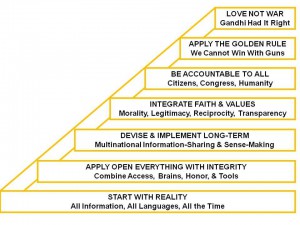
Figure 11: Strategy for Creating a Prosperous World at Peace.
Bibliography
Ackoff, Russell (2004) “Transforming the Systems Movement” PLA Conference Paper, 26 May HTTP: <http://tinyurl.com/Ackoff-Prime>.
Atlee, T. (2012) Empowering Public Wisdom: A Practical Vision of Citizen-Led Politics, San Francisco, CA: Evolver Editions.
_____ (2009) Reflections on Evolutionary Activism, Seattle, WA: CreateSpace.
_____ (2002) The Tao of Democracy: Using co-intelligence to create a world that works for all, Seattle, WA: BookSurge
Bamford, James (2001) Body of Secrets: Anatomy of the Ultra-Secret National Security Agency, New York, NY: Doubleday.
Bean, Hamilton (2011) No More Secrets: Open Source Information and the Reshaping of U.S. Intelligence, Santa Barbara, CA: Praeger.
Boyd, Ezra (2009) “Large Map of US counties with levees,” Levves.org, New Orleans, HTTP: <http://levees.org/large-map-of-u-s-counties-with-levees/>
Bozeman, A.B. (1998) Strategic Intelligence and Statecraft: Selected Essays, Dulles, VA: Brassey’s Inc.
Brin, David (1999) The Transparent Society: Will Technology Force Us To Choose Between Privacy And Freedom? New York, NY: Basic Books.
Daly, Herman (2010) Ecological Economics: Principles and Applications, 2nd edn. Washington, DC: Island Press,
_____ (1994) For the Common Good: Redirecting the Economy toward Community, the Environment, and a Sustainable Future, Boston, MA: Beacon Press,
_____ (1993) Valuing the Earth: Economics, Ecology, Ethics, Cambridge, MA: The MIT Press, Cambridge.
_____ (1991). Steady-State Economics: With New Essays, 2nd edition, Washington, DC: Island Press,
Davis, Jack (1986) “Competing Influences on the Policymaker,” as 2000, pp. 46-53.
Denninger, Karl (2011) Leverage: How Cheap Money Will Destroy the World, Hoboken, NJ: Wiley.
Durant, Will (1916) Philosophy and the Social Problem: Annotated Edition (2008), Frisco, TX: Promethean Press.
Earth Intelligence Network (2006) “Reference: Earth Intelligence Network Analytic Concept”, HTTP: <http://tinyurl.com/EIN-2006>.
Esiemokhai, E.O. (2012) “National Security, Military Intelligence, and You,” Nigerian-Newspaper.com, 31 July 2011. HTTP: <http://nigerian-newspaper.com/national-security.htm>.
Fuller, R.B. (1969) Ideas and Integrities: A Spontaneous Autobiographical Disclosure, New York, NY: Macmillan.
Gaddis, J.L. (2004) The Landscape of History: How Historians Map the Past, Oxford, UK: Oxford University Press.
Garland, Eric (2012), “Peak Intel: How So-Called Strategic Intelligence Actually Makes Us Dumber, The Atlantic (online), 5 April 2012. HTTP: http://tinyurl.com/Garland-Intel
Herman, Michael (1996) Intelligence Power in Peace and War. Cambridge, UK: Cambridge University Press.
Hill, C. (2011) Grand Strategies, Literature, Statecraft, and World Order, New Haven, CT: Yale University Press.
Kahn, D. “An Historical Theory of Intelligence.” Intelligence and National Security 16, no. 3 (Autumn 2001): 79-92.
Kent, S. (1965) Strategic Intelligence for American World Policy, North Haven, CT: Archon Books.
Liszkiewicz, J.Z. (2010), “True Cost of One White Cotton T-Shirt,” Reconfigure, HTTP: <http://true-cost.re-configure.org/true_cost_shirt.htm>
Marchetti, V and J.D. Marks (1976) The CIA and The Cult of Intelligence, Philadelphia, PA: Coronet Books,
Mitelman, L.T. (1974), “Preface to a Theory of Intelligence.” Studies in Intelligence vo1. 8, no. 3 (Fall 1974): 19-22.
Myers, K.C. (2010) Reflexive Practice: Professional Thinking for a Turbulent World, New York, NY: Palgrave Macmillan.
North, Gary (2012) “Administrative Law (New World Order) versus Democracy (Live free or Die),” Phi Beta Iota Public Intelligence Blog, 4 February 2012, HTTP: <http://tinyurl.com/North-Admin-Law>.
Olcott, Anthony (2012) Open Source Intelligence in a Networked World. New York, NY: Continuum International Publishing.
Perrow, Charles (2011) The Next Catastrophe: Reducing Our Vulnerabilities to Natural, Industrial, and Terrorist Disasters, Princeton, NJ: Princeton University Press.
Pillar, Paul (2011) Intelligence and U.S. Foreign Policy: Iraq, 9/11, and Misguided Reform, New York, NY: Columbia University Press.
Prahalad, C.K. (2009) The Fortune at the Bottom of the Pyramid: Eradicating Poverty Through Profits, Saddle River, NJ: Pearson Prentice Hall.
Rheingold, H. (2012) NET SMART: How to Thrive Online, Cambridge, MA: MIT Press.
Rischard, J.F. (2003) HIGH NOON: 20 Global Problems, 20 Years to Solve Them, New York, NY: Basic Books.
Roberts, P.C. (2012), “December Net Jobs a 12,000 LOSS – Actual Unemployment 2.6 Times Official Rate or 22.4%,” Phi Beta Iota Public Intelligence Blog, HTTP: <http://tinyurl.com/Roberts-22-4>.
Steele, R.D. (1988-2012) All articles & chapters, briefings & lectures, books, videos, etcetera, easily accessed online. HTTP: <http://tinyurl.com/Steele2012>.
Sutton, Boyd (2006) “Global Coverage, Looking Backward, Looking Forward,” Phi Beta Iota Public Intelligence Blog 24 December 2006, HTTP: <http://tinyurl.com/Sutton-2006>.
Taibbi, M. (2010) Griftopia: Bubble Machines, Vampire Squids, and the Long Con That Is Breaking America, Spiegel & Grau.
Taplin, W.L. (1989), “Six General Principles of Intelligence.” International Journal of Intelligence and Counterintelligence 3, no. 4 (Winter 1989): 475-491.
Tovey, M. (2008), COLLECTIVE INTELLIGENCE: Creating a Prosperous World at Peace, Oakton, VA: Earth Intelligence Network.
Treverton, Gregory (1986) “Producer versus Consumer Outlooks,” Steele 2000, pp. 48-49, cf. Figures 11-12.
Truman, H. (1963) “Limit CIA Role to Intelligence,” The Washington Post, 22 December 1963, A11. HTTP: <http://tinyurl.com/Truman-CIA-63>.
United Nations (2004), A More Secure World: Our Shared Responsibility, High-Level Panel on Threats, Challenge, and Change, New York, NY: United Nations.
Weinberger, David (2012). Too Big to Know: Rethinking Knowledge Now That the Facts Aren't the Facts, Experts Are Everywhere, and the Smartest Person in the Room Is the Room, New York, NY: Basic Books
Wilensky, H.L. (1967). Organizational Intelligence: Knowledge and Policy in Government and Industry, New York, NY: Basic Books.
Wilson, E. O. (1999). Consilience: The Unity of Knowledge, New York, NY: Vintage.
Wright, Robert (2001). Nonzero: The Logic of Human Destiny. New York, NY: Vintage.
Zegart, A.B. (2009). Spying Blind: The CIA, the FBI, and the Origins of 9/11, Princeton, NJ: Princeton University Press.
About the Author
Robert David STEELE Vivas, (60), is CEO (pro bono) of Earth Intelligence Network, a 501c3. He served for nine years as a spy with additional responsibilities in advanced analytics, counterintelligence, information technology, and overhead system program management. An honorary hacker since 1994, he was among the first to call for cyber-security standards and education, and also the first to conceptualize a “Smart Nation” in which education, intelligence, and research are seamlessly integrated. He served in addition four years active duty as a Marine Corps infantry officer and S-1/Adjutant, sixteen years as a Reserve intelligence officer, and five years as the second ranking civilian for Marine Corps Intelligence, where he was the senior civilian responsible for creating the Marine Corps Intelligence Center in 1988, and the Study Director for the first global intelligence study to create strategic acquisition generalizations, Planning and Programming Factors for Expeditionary Operations in the Third World (MCCDC, 1990). Author of many books, articles, and chapters, he is also the #1 Amazon reviewer for non-fiction, reading and reviewing in 98 categories accessible at Phi Beta Iota the Public Intelligence Blog.
Endnotes
[1] See also Wilson 1999, Weinberger 2012.
[2] General Tony Zinni is cited with respect to 4%, in my chapter on “Open Source Intelligence” Loch Johnson (ed.) Strategic Intelligence (Volume 2 Chapter 6), Santa Barbara, CA: Praeger, pp. 95-122
[3] The secret world is focused on “hard targets” (a very few) instead of “global coverage” (everything always), and also focused on impressing the top political leader(s) rather than providing balanced support to all elements of the government or to society at larger. Cf. “Intelligence for the President—and Everyone Else,” Counterpunch, Weekend Edition Feb 29-Mar 02, 2009.
[4] Requirements definition, collection management, source discovery and validation, multi-source fusion with machine and human processing, machine and human analytics, and timely actionable presentation to a decision-maker in a form that is useful and portable.
[5] Anonymous. A still valid statement from the 1990’s, by Ellen Seidman, then Special Assistant to the President on the National Economic Council (Steele 2008a: 124):
CIA reports only focus on foreign economic conditions. They don't do domestic economic conditions and so I cannot get a strategic analysis that compares and contrasts strengths and weaknesses of the industries I am responsible for. On the other hand, Treasury, Commerce, and the Fed are terrible at the business of intelligence — they don't know how to produce intelligence.
Ralph Peters has described to me the challenge of 10,000 elephants each being examined by a 100,000 blind men, none of whom talk to each other.
[6] See HTTP:<http://tinyurl.com/Steele-Craft-Refs>. Relevant here are Esiemokhai 2011, Kahn 2001, Marchetti & Marks 1976, Mitelman 1974,Taplin 1989.
[7] “Open Source Agency Executive Access Point,” online at HTTP: <http://tinyurl.com/OSA2011>. My one-pager to Sir Richard Branson never reached him. It can be viewed online at HTTP: <http://tinyurl.com/Steele4Branson>.
[8] HTTP: <http://tinyurl.com/NSA-BRAIN>
[9] The foundation image above came from Dick Klavans, long a pioneer of citation analytics, and more recently a founder of Maps of Science. Cf. Maps of Science, HTTP: <http:mapsofscience.com>. See also Wilson 1999.
[10] Earth Intelligence Network 2006.
[11] For a more nuanced discussion of old versus new cyber-security mindsets, see <Who’s Who in Cyber-Intelligence: Robert Garigue>.
[12] Ibid.
Short URL to This Post: http://tinyurl.com/IntelCraft21
Citation: Robert David Steele, “The Evolving Craft of Intelligence,” in Robert Dover, Michael Goodman, and Claudia Hillebrand (eds.). Routledge Companion to Intelligence Studies (Oxford, UK: Routledge, 31 July 2013)